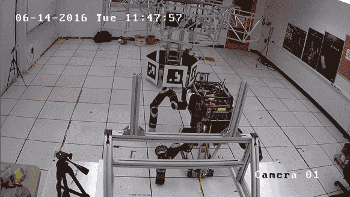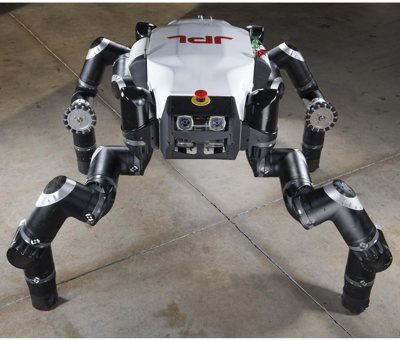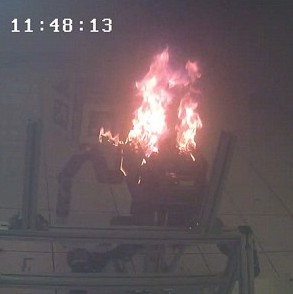| Exploding RoboSimian - What 96 Batteries Can Do |
| Written by Harry Fairhead | |||
| Sunday, 06 November 2016 | |||
|
Footage has recently been released by Nasa of a fireball caused while charging a set of new batteries in RoboSimian, a rescue robot built for the Darpa Robotics Challenge. The robot was completely destroyed and the event could have been lethal had humans been present.
Lithiium-ion batteries are notorious for their propensity to burst into flames. It's a problem that has beset Samsung which uses them in it mobile phones and washing machines, requiring product recalls that threaten the future of the company. A mobile phone just has one battery, RoboSiminan has 96 and although only one was faulty the result of it overcharging was catastrophic:
Standing waist high and often described as ape-like, RoboSimian is a 4-limbed robot developed by the Jet Propulsion Lab for the DARPA Robotics Challenge. It has 28 degrees-of freedom for mobility and manipulation and folds into a relatively small volume and is remotely controlled using a normal computer monitor, keyboard and mouse. Ironically, in view of this incident it was designed to assist in dangerous situations such as nuclear meltdowns and the aftermath of bomb blasts. You can see it here in action:
What happened back in June this year was recently disclosed by NASA. As part of preparations for tests beyond the lab, a battery was replaced by a team of four researchers. Fortunately in view of what happened next, the engineers went to lunch while it was set to charge. The fire was noticed by an intern in the adjacent lab who tried to extinguish it with CO2 The fire department, summoned by another intern, had to drag it outside to douse it with water. Commenting on the accident, Jay Whitacre, a Carnegie Mellon professor of materials science and engineering who used to do battery science at the Jet Propulsion Laboratory said: “In general, a single lithium ion cell is dangerous, but it can’t cause a gigantic explosion. The more you put in one place, the more you have to look at it. Battery packs are made up of a number of smaller cells. It’s common for one of the cells to go a little haywire first. That cell damages its neighbors, and then they go nuts, and the mess cascades". Whitacre also noted how this accident was different from others: “It looks to me like almost everything went at the same time or like one of the cells got very, very hot very quickly.” So, as well as investing in adequate fire fighting gear, the other lesson to be learned from this incident is to use temperature sensors to detect rapid overheating In the age of IoT this is an accident that should not happen - either in mass produced mobile phone or in expensive one-off robots.
Related ArticlesSelling The DARPA Robotics Challenge
To be informed about new articles on I Programmer, sign up for our weekly newsletter, subscribe to the RSS feed and follow us on Twitter, Facebook, Google+ or Linkedin.
Comments
or email your comment to: comments@i-programmer.info
|
|||
| Last Updated ( Sunday, 06 November 2016 ) |





